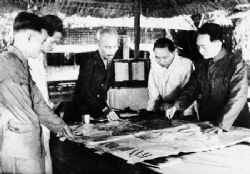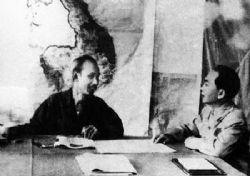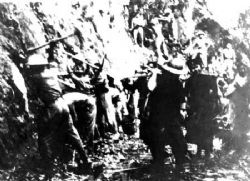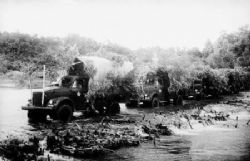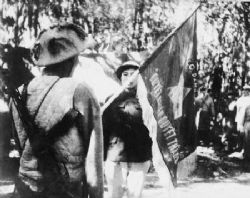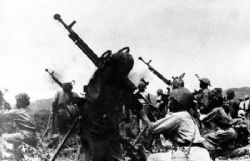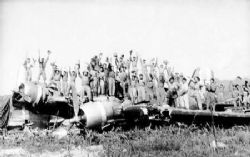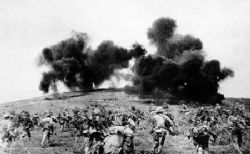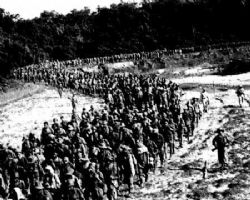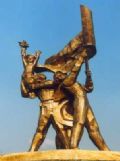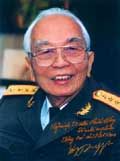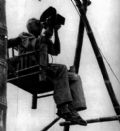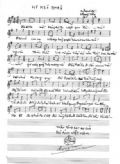Le Vietnam dans la nouvelle ère
Dien Bien Phu Victory -- The Politico - Spiritual Power and the Might of Vietnamese Wisdom
On the occasion of the 55th anniversary of Dien Bien Phu Victory (May 7, 2009), Vietnam Pictorial would like to re-introduce to the readers an article "Dien Bien Phu Victory – The power of politics, spirit and intelligence of Vietnam" by the late Senior Lieutenant-General, Professor Hoang Minh Thao, which was published on Vietnam Pictorial on the 50th anniversary of Dien Bien Phu Victory (May 7, 1954 – May 7, 2004).
After more than seven years
of conducting the second war of aggression against
Thanks to the politics of people’s warfare, with the combination of two approaches to its execution: guerilla and regular war, our army and people could gradually switch from the passive to the active, recording successive resounding victories.
In face of successive
defeats in
On May 7, 1953, under the US agreement, French Premier Renet Mayer appointed 4-star Gen. Navarre to replace Gen. Salan, as Commander-in-Chief of the French Expeditionary Corps in Indochina, hence the birth of the Navarre Plan, to salvage the honour of France.
Our selection of
Our overall strategic plan was to split and disperse the enemy, launch active operations on other battlefronts, where they were most vulnerable and which they could not afford to abandon, but had to send further troops to come to their rescue. To execute this ploy, we embarked on diversionary activities, to fool the enemy and manipulate them at will.
To limit the enemy’s mobile
forces, one of their most formidable and efficient, we had to divert and
disperse them to the other battlefronts, so that the enemy could not
afford to muster large forces for the rescue of
At Dien Bien Phu, the main battlefront, the Campaign Command headquarters (i.e. the advance party) drew up a plan for “lightning battle, lightning victory”, with a determination to eliminate this complex of fortified positions in 2 days and 3 nights, as the condition of the enemy was still a temporary defensive one.nbsp;nbsp;nbsp;nbsp;nbsp;nbsp;nbsp;nbsp;
After hearing the reports, Commander-in-Chief Gen. Vo Nguyen Giap, the supreme commander of the campaign, was so valiantly assertive and sensitive to the situation that he proposed a change in the plan from “lightning battle, lightning victory” into “firm fighting, firm advancing”, with a subsequent re-disposition of the forces. His guideline for operations was fully approved by the Standing Committee of the Party Central Committee and President Ho Chi Minh.
In the Dien Bien Phu Campaign, the enemy was already mired in isolation, digging in and setting up last-ditch defenses in a deep valley, surrounded by our forces on higher positions. We had built a whole network of communication trenches, a system of set battle-arrays for our army men’s encirclement and offensive. It was for the first time that our forces launched their encirclement and offensive on a fortified camp when the enemy had better and more modern supplies and ammunitions. Along with the annihilation of the enemy’s resources, i.e. artillery, tanks and aircraft, by means of a network of communication lines and advancing trenches under the tactic of “ encirclement for usurpation and annihilation”, our army men step by step tightened the noose. Thus we enhanced our superior positions in both space and time during the Campaign and generated our monumental might in the offensive, which was aimed at obliterating the whole complex of fortified positions, for final victory.
The tactic during the campaign was for successive breakthroughs, in combination with encirclement and usurpation. To destroy the enemy’s solid fortified defense works, we had to launch sudden breakthroughs to annihilate them, and the breakthroughs had to be successive, without interruption which gave the enemy no breathing space for resistance. Since the campaign was a huge formation, complex and comprehensive, the breakthroughs should come one after the other, so that we could have enough time to make necessary re-arrangements of formations and changes in the battle arrays. Furthermore, all this was combined with encirclement and usurpation. Therefore, the communication lines and trenches were dug in such a way as to retain the combat power, using them as effective springboards for efficient assaults on the enemy’s entrenched fortifications, and come closer to the enemy positions to minimize casualties from adversary artillery fire.
Such was our tactic. As for the battle complexion and array, we launched encirclement on the east and west of the enemy’s fortified entrenchments on the high ground, foiled their defensive lines on lower ground, destroyed their defensive belt on the periphery to make deep thrusts into their interior and their command post, besieged the airfield and pressed closer to it, to finally cut off all airlifted supplies, the enemy’s only lifeline and last hope.
This art of operation was
quite compatible with the Vietnamese conditions. The battle complexion and
array bore expression of our tradition of Vietnamese martial art -
“pitting the weaknesses against the fortes ”. It was due to the fact that
we were inferior in hardware, such as aircraft, tanks, artillery … that we
had to resort to it. This tactic called for a long campaign. Later in the
Ho Chi Minh Campaign, as our power for sudden breakthroughs and deep
thrusts was robust and mighty, we could launch our strikes to liberate
Resolving the conflicts in the relations between the objective conditions and actions, in compatibility with the actual facts conforms to dialectics and shows our creativity and methodological command. One of the things, interesting and creative, lies in the fact that for the first time in Vietnam, and rarely seen in the world as well, we hauled large artillery pieces up the rugged mountain peaks and camouflaged them well in the shelters, to point them directly at the enemy’s positions on the lower ground, to overwhelm and overpower them. With this tactic, we could protect our artillery pieces, multiply our power and achieve accuracy. As a matter of fact, our artillery range was 5-7 km from the targets (usually the 105 mm artillery gun can fire at a target 10-11 km away). With such close range, we could achieve better accuracy and economy of shells, hitting the centre of the target with 2-3 shells only, instead of up to 7 shells for long range, not to mention the greater power and destructiveness. Our men were safe in the bomb- and shell-proof shelters. Thanks to this advantage, although we were outgunned, from higher positions, we could overwhelm the enemy’s artillery, with such efficiency that Pirot, the French artillery commander, caught unawares, had panicked and went to the length of committing suicide.
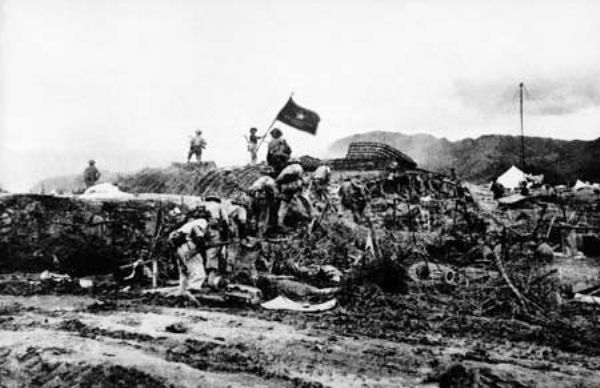
At 5.40 p.m, on May 7, 1954 our soldiers planting the flag
“Determined to fight and to win” on
the top of General De Castries’ bunker.
The Dien Bien Phu victory
was a triumph of the people’s warfare on a nationwide scale, with
resounding onslaughts and offensives on Gia Lam airport, Cat Bi airfield,
Highway 5,
The victory brought about a
fiery confidence and ushered in a new era for the national liberation
movement, that was surging up powerfully in the world, particularly in
It was the dauntless indomitability of a people who were resolved to fight foreign invaders that President Ho Chi Minh asserted: “The history of the world and Vietnam proves: If a people rise up to struggle for their Fatherland, no one and no force whatever can defeat them.” It was the triumph of Vietnamese culture – Ho Chi Minh Culture.
|
With its exceptionally important strategic
military position, Dien Bien Phu overwhelms a large region of the
North-West and |
|
At 5 p.m on March 13,
1954, our army fired its first salvos, attacking the complex of
entrenched fortifications in In the first drive of assaultsnbsp; (March 13-17, 1954), our army neatly annihilated the entrenched camps on Him Lam and Doc Lap, forced the Ban Keo entrenched camp to surrender, and broke up the northern gateway of the complex. In the second offensive drive on March 30, 1954, our army tightened its encirclement, splitting the enemy forces while launching never-ending assaults, thus driving the enemy, severely worn out and utterly demoralized, into a passive defense. From May 1-7, 1954,
our army launched its 3rd drive of assaults, totally
obliterating the whole complex of entrenched camps in |
nbsp;Story by Senior Lieut. Gen. – Prof. Hoang Minh Thao - Photos: Files nbsp;nbsp;
Senior Lieut. Gen. – Prof. Hoang Minh Thao - Files

